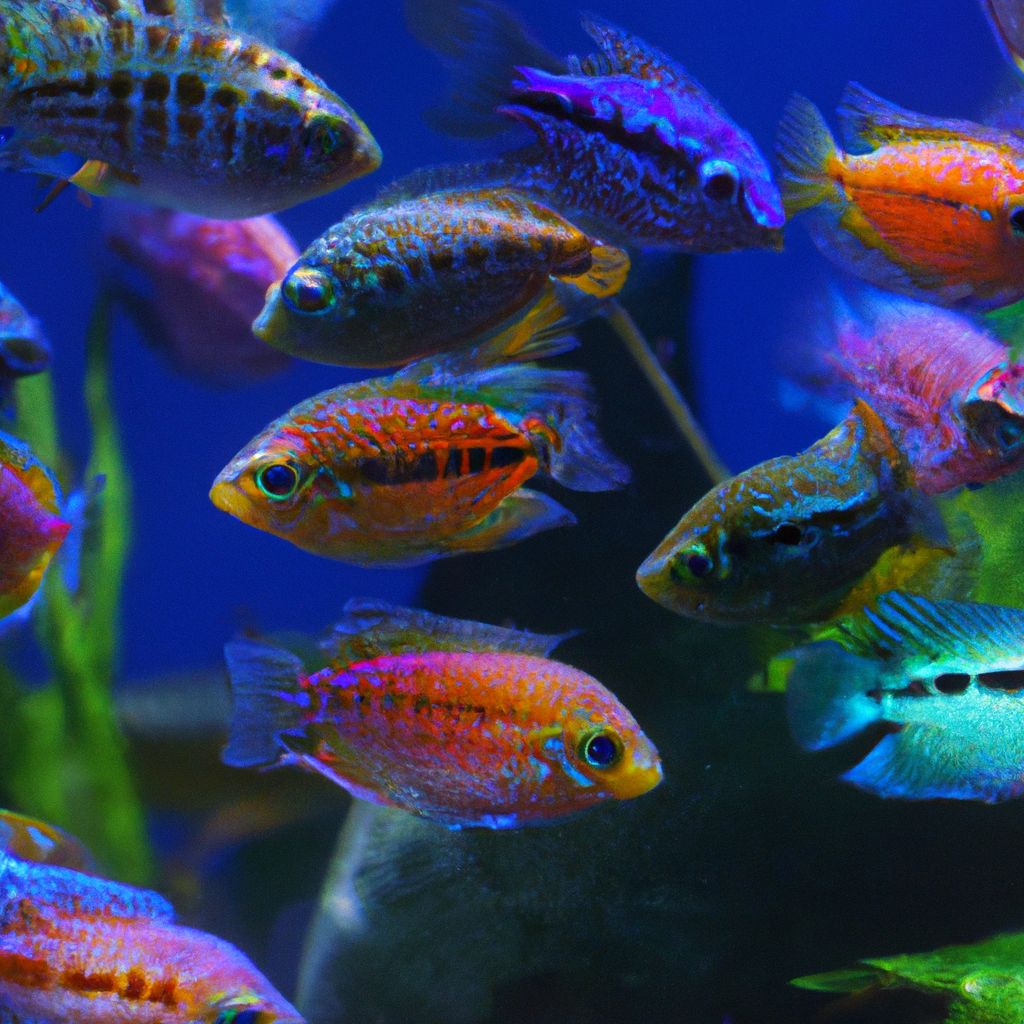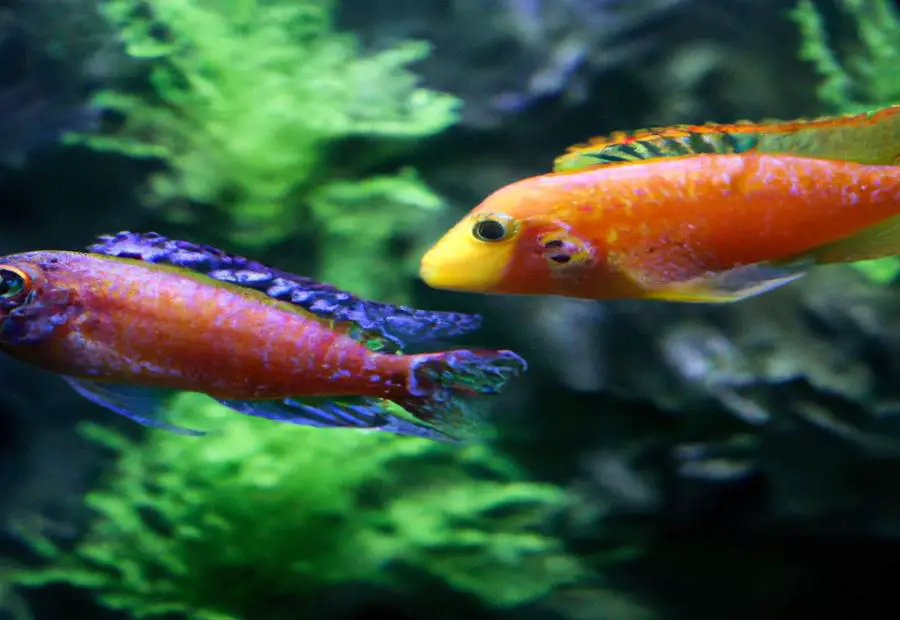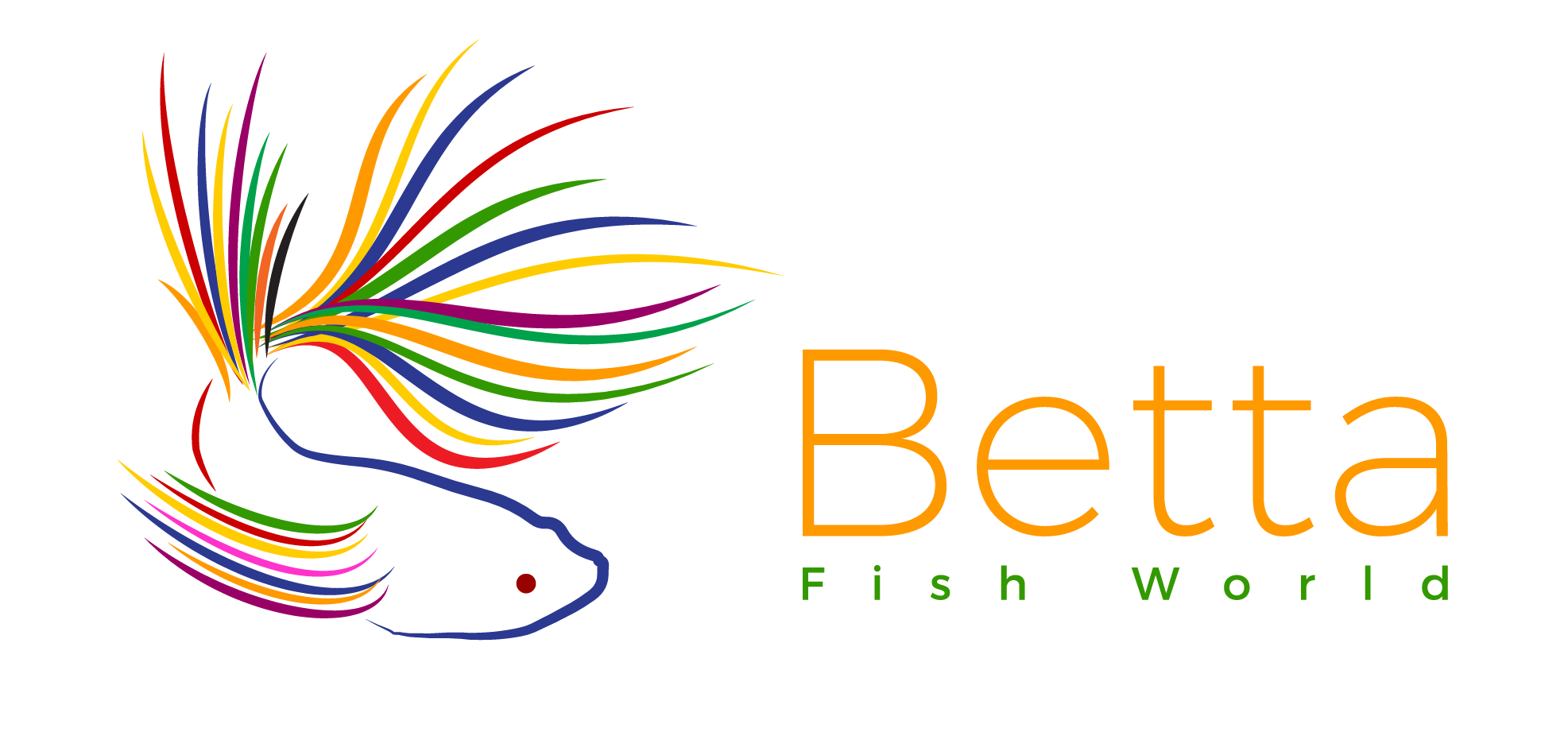Last Updated on 2 years by admin

Cichlids are a diverse and fascinating group of fish known for their vibrant colors and unique behavior. While they can be peaceful and sociable at times, they are also known to exhibit territorial and aggressive tendencies. This raises the question: can cichlids eat each other? Understanding the behavior and feeding habits of cichlids is key to understanding the possibility of cannibalism among these fish.
Cichlids are omnivorous by nature, meaning they have a wide-ranging diet that includes both plant matter and small animals. However, their aggression can be linked to competition for territory, mates, or food. Factors such as overcrowding, inadequate food supply, and lack of hiding spots can increase the likelihood of cichlids displaying aggressive behavior towards one another. In some cases, this aggression can escalate to cannibalism.
Certain species of cichlids are more prone to cannibalistic behavior than others. Examples of cichlid species known to display cannibalism include the Red Devil Cichlid and the Jaguar Cichlid. It’s important to note that not all cichlids engage in cannibalism, and this behavior is more commonly observed in larger and more aggressive individuals.
Signs that cichlids may be eating each other include missing fish, damaged fins or scales, and aggressive behavior towards other tankmates. If you notice these signs, it’s essential to take steps to prevent further cannibalism.
Preventing cichlid cannibalism involves providing sufficient space in the aquarium to minimize territorial disputes, ensuring proper feeding to avoid competition for food, and understanding and monitoring the hierarchical structure among cichlids. Creating hiding spots and introducing tankmates of similar size and temperament can also help reduce aggression.
By understanding cichlid behavior and taking appropriate measures to prevent cannibalism, you can ensure a harmonious and thriving aquarium environment for these captivating fish.
‘\n##\n
Key takeaway:
\n
- Cichlids may exhibit cannibalistic behavior: Some cichlid species are known to eat each other, especially when certain factors are present.
- Factors that contribute to cichlid cannibalism: Factors such as overcrowding, limited food supply, and territorial disputes can increase the likelihood of cichlids eating each other.
- Preventing cichlid cannibalism: Providing sufficient space, ensuring proper feeding, and understanding and monitoring cichlid hierarchy can help prevent cannibalistic behavior among cichlids.
\n
\n
‘
Understanding Cichlid Behavior

Photo Credits: Bettafishworld.Com by Roger Sanchez
Understanding Cichlid Behavior is crucial for anyone interested in keeping these fish. Here are some important points to consider:
- Cichlids are highly territorial. They establish territories and defend them vigorously against intruders.
- Mating and breeding behaviors are prominent in cichlids. They build nests, court their mates, and care for their fry.
- Social hierarchies exist within cichlid communities. Dominant individuals exert control over subordinate ones.
- Cichlids exhibit a wide range of feeding behaviors. Some are herbivorous, others are carnivorous, and some are omnivorous.
- Colors and patterns play a role in cichlid behavior. Bright colors may be used for territorial displays or attracting mates.
Understanding Cichlid Behavior is not only useful for hobbyists but also for scientists. By studying cichlid behavior, researchers can gain insights into animal communication, social structures, and evolutionary processes.
In a true history of cichlid behavior, one fascinating example is the phenomenon of mouthbrooding. Several species of cichlids, such as the Nicarguense cichlid, exhibit this behavior. The females lay their eggs, and then the males collect the eggs in their mouths. They carry the developing embryos until they are ready to swim independently. This behavior ensures the survival of the offspring and is a remarkable example of parental care in cichlids.
By understanding cichlid behavior, we can appreciate the complexity and diversity of these fish and provide them with the optimal care they deserve.
What Do Cichlids Eat?
|
Cichlid Species |
Primary Diet |
Secondary Diet |
|
African Cichlids |
Algae, small invertebrates |
Plant matter, small fish |
|
South American Cichlids |
Insects, crustaceans |
Small fish, plant matter |
|
Central American Cichlids |
Insects, small crustaceans |
Snails, vegetation |
|
Malawi Cichlids |
Algae |
Small fish, invertebrates |
Cichlids have diverse dietary preferences depending on their species and natural habitat. African cichlids primarily feed on algae and small invertebrates, while South American cichlids have a diet consisting of insects and crustaceans.
Central American cichlids feed on insects and small crustaceans, and they may also consume snails and vegetation. Malawi cichlids are known for their preference for algae, but they also consume small fish and invertebrates.
Understanding the specific dietary needs of cichlids is crucial for their overall health and well-being in captivity. Providing a balanced diet that mimics their natural food sources is essential for their proper growth and development. What Do Cichlids Eat?
Why Do Cichlids Exhibit Aggressive Behavior?
Cichlids exhibit aggressive behavior for various reasons. Why do cichlids exhibit aggressive behavior? Firstly, aggression in cichlids is often linked to territory defense. They are known to be territorial creatures, especially during breeding seasons. Their aggression helps them protect their nesting sites and ensure the survival of their offspring.
Secondly, cichlids may also display aggressive behavior when competing for resources such as food and mates. This is particularly true in overcrowded aquariums where there is limited space and resources available.
Additionally, some cichlid species have a hierarchical social structure, where aggression is used to establish dominance and maintain social order within the group. This aggression is not always harmful and serves as a way to establish boundaries and minimize conflicts.
However, it is important to note that excessive aggression can lead to injury or even death of weaker or smaller individuals. To prevent aggressive behavior in cichlids, it is crucial to provide them with sufficient space to establish territories, offer a well-balanced diet to minimize competition for food, and carefully monitor their interactions to prevent any harm.
By understanding the reasons behind cichlid aggression and implementing the appropriate measures, cichlid owners can ensure a harmonious and thriving aquarium environment.
Can Cichlids Eat Each Other?
Curious about the intriguing world of cichlids? Let’s unravel the fascinating question: can cichlids eat each other?
Delving into factors that determine cichlid cannibalism, exploring examples of cichlid species known for displaying cannibalistic behavior, and examining signs that cichlids may be munching on their own kind.
Get ready to dive into this captivating exploration of the complex dynamics within the cichlid realm!
Factors That Determine Cichlid Cannibalism
Understanding the factors that determine cichlid cannibalism is essential for cichlid owners. Tank size is one factor to consider, as limited space can lead to increased aggression and competition among cichlids, resulting in cannibalistic behavior. Providing sufficient space for each cichlid can help reduce territorial disputes.
Another important factor is the availability of food. Insufficient food can trigger cannibalism in cichlids. Ensuring proper feeding and providing an adequate amount of food can help prevent aggression and cannibalism.
Age and size difference also play a role in cichlid cannibalism. When there is a significant difference in size between individuals, cichlids are more likely to exhibit cannibalistic behavior. Larger cichlids may prey on smaller ones, especially during breeding or territorial disputes.
Breeding behavior is another factor to consider. During breeding, cichlids may become more aggressive and territorial, increasing the chances of cannibalism. Providing suitable breeding environments and monitoring aggressive behavior during this period are crucial.
Stress levels among cichlids also contribute to cannibalistic behavior. Factors like overcrowding or poor water conditions can cause high stress levels. Therefore, maintaining a stress-free environment is important to prevent cannibalism.
By understanding and addressing these factors, cichlid owners can create a suitable environment for their fish, minimizing the risk of cannibalistic behavior. Adequate space, proper feeding, monitoring aggression, and maintaining optimal water conditions are all crucial for promoting a peaceful and harmonious community of cichlids.
Examples of Cichlid Species That are Known to Display Cannibalistic Behavior
- The Jaguar Cichlid (Parachromis managuensis) is a large and aggressive species known for its cannibalistic behavior. It is not uncommon for adult Jaguar Cichlids to prey on smaller individuals, including their own offspring.
- The Red Devil Cichlid (Amphilophus labiatus) is another species that exhibits cannibalistic tendencies. They are highly territorial and will often attack and consume smaller fish in their environment.
- The Green Terror Cichlid (Andinoacara rivulatus) is known for its aggressive behavior, which includes cannibalism. They have been observed preying on smaller fish, especially during breeding and territorial disputes.
- The Flowerhorn Cichlid is a hybrid species that exhibits a variety of aggressive behaviors, including cannibalism. These fish have been known to attack and consume smaller tankmates.
- The Managuense Cichlid (Parachromis managuensis) is a large and predatory species that is highly territorial. They have been observed displaying cannibalistic behavior, especially towards smaller fish.
Signs That Cichlids May Be Eating Each Other
The signs that cichlids may be eating each other can be identified through several observable behaviors:
- Aggressive behavior: Aggression is a common sign that cichlids may be eating each other. If you notice frequent chasing, fin nipping, or aggression during feeding, it could be an indication of cannibalism.
- Missing or injured fish: If you find that certain cichlids are missing or if you notice fish with wounds or bite marks, it suggests that cichlids may be eating each other.
- Unexplained deaths: Sudden and unexplained deaths of cichlids in the tank can also be a sign of cannibalism. If the bodies show signs of being torn or partially eaten, it is likely that other cichlids in the tank are consuming them.
- Disappearance of smaller fish: Cichlids are known to prey on smaller fish, particularly if they can fit them into their mouths. If you have smaller fish in your tank that suddenly disappear, it is possible that they have been eaten by other cichlids.
- Overcrowding: If your tank is overcrowded with cichlids, there is a higher likelihood of cannibalistic behavior. Limited space and competition for resources can lead to aggression and the consumption of other fish.
- Extra protective behavior: If you observe cichlids displaying unusually protective behavior over certain territories or hiding spots, it could indicate that they are guarding potential food sources, such as the remains of consumed fish.
Preventing Cichlid Cannibalism
As we dive into the topic of preventing cichlid cannibalism, we’ll explore key strategies to ensure the well-being of these intriguing aquatic creatures. From providing sufficient space for their natural habitat to understanding and monitoring their complex hierarchy, we’ll uncover effective ways to maintain peace and harmony in your cichlid tank. Additionally, we’ll delve into the importance of ensuring proper feeding, which plays a vital role in minimizing aggressive behavior. Are you ready to create a harmonious environment for your cichlids? Let’s get started!
Providing Sufficient Space
Providing sufficient space is crucial to prevent cichlid cannibalism and promote a harmonious and healthy environment for these fish. Space is a key factor in minimizing aggression among cichlids. They need ample room to establish territories and swim freely, reducing the likelihood of aggressive encounters. The recommended minimum tank size for cichlids varies depending on the species. However, a general guideline is to provide a tank capacity of at least 10 gallons per cichlid to ensure they have enough space to establish territories.
Creating hiding spots and using decor such as rocks, caves, and plants can help cichlids establish their own territories and reduce aggression. These provide hiding places and break lines of sight, minimizing confrontations. Consider the number of cichlids in your tank. Overcrowding can lead to increased competition for resources and aggression. Ensure a proper ratio of males to females, as having too many males can lead to increased aggression. Fact: Providing sufficient space not only reduces aggression among cichlids but also enhances their overall well-being, allowing them to thrive and display their natural behaviors.
Ensuring Proper Feeding
Ensuring proper feeding is crucial for the overall health and well-being of cichlids. Here are some vital factors to consider:
-
Provide a well-balanced diet: Cichlids, being omnivorous, have diverse nutritional needs. A comprehensive diet should consist of high-quality pellet or flake foods designed specifically for cichlids, along with live or frozen options like bloodworms, brine shrimp, and krill.
-
Feed appropriate portions: Overfeeding can lead to obesity and health issues in cichlids. It is important to feed them the correct amount of food based on their size and activity level. It is generally better to offer smaller portions multiple times a day rather than one large feeding.
-
Consider dietary preferences: Different cichlid species may have specific dietary preferences. Some might prefer a more carnivorous diet, while others require more plant matter. Research the specific dietary needs of your cichlid species and provide suitable food choices.
-
Offer variety: Providing a diverse diet ensures that cichlids receive all the necessary nutrients. Mix up the types of food offered, including different ingredients and presentation (dry, frozen, or live). This approach will stimulate their appetite and provide a balanced nutritional intake.
-
Monitor feeding behavior: Pay attention to how much and how quickly cichlids consume their food. Uneaten food can cause water quality issues. If there is excess food remaining after feeding, adjust portion sizes accordingly.
-
Cleanliness and water quality: Uneaten food and food waste can negatively impact water quality. After feeding, remove any uneaten food from the tank to maintain good water conditions and prevent the growth of harmful bacteria.
Understanding and Monitoring Cichlid Hierarchy
Understanding and monitoring cichlid hierarchy is crucial for maintaining a healthy and balanced aquarium. In cichlid communities, dominant individuals establish themselves as leaders, while subordinate individuals occupy lower positions in the hierarchy. This hierarchy is typically based on factors such as size, aggression, and breeding potential.
Understanding cichlid hierarchy enables hobbyists to observe and comprehend the social dynamics within their aquarium. By closely observing their behavior, hobbyists can identify dominant and subordinate individuals, as well as how they interact with each other.
Once the hierarchy is established, it is essential to monitor it regularly. This involves observing any changes in behavior or aggressive interactions between cichlids. Monitoring the hierarchy helps prevent any potential conflicts that may arise and allows for timely intervention if necessary.
To ensure a stable hierarchy, it is important to create an environment that supports natural behavior. Providing sufficient hiding places, territory boundaries, and suitable tank size are crucial aspects of maintaining cichlid hierarchy.
By understanding and monitoring cichlid hierarchy, the aquarist can create an environment that promotes the well-being and peaceful coexistence of their cichlids.
In history, aquarists have long recognized the significance of understanding and monitoring cichlid hierarchy in maintaining an optimal aquatic environment. By understanding and monitoring cichlid hierarchy, hobbyists have been able to minimize aggression and maintain thriving cichlid communities. This knowledge has contributed to the overall success and enjoyment of keeping cichlids in aquariums worldwide.
Some Facts About Will Cichlids Eat Each Other:
- ✅ Cichlids are aggressive fish known for their tendency to eat each other. (Source: Our Team)
- ✅ To reduce aggression among cichlids, it is important to replicate their natural habitat and provide appropriate feeding. (Source: Our Team)
- ✅ Gender plays a role in cichlid aggression, with females often inciting male aggression. (Source: Our Team)
- ✅ Overstocking the tank can help curb aggression by making it difficult for dominant cichlids to single out submissive ones. (Source: Our Team)
- ✅ Different species of cichlids have varying levels of aggression, and their compatibility should be considered when keeping them together. (Source: Our Team)
Frequently Asked Questions
Why are my African Peacock Cichlids fighting each other?
African Peacock Cichlids are known for their aggressive and territorial behavior. It is possible that conflicts arise due to the establishment of a social hierarchy where one fish becomes dominant and others are considered threats. This can lead to fights and even death among the cichlids.
What can I do to stop my African Peacock Cichlids from fighting?
There are several measures you can take to reduce aggression and create a more peaceful environment for your cichlids. These include appropriate feeding, replicating their natural habitat, considering the gender ratio in the tank, overstocking the tank, and being mindful of the compatibility of different cichlid species.
How can I establish a healthier hierarchy among my African Peacock Cichlids?
If one fish becomes overly aggressive and disrupts the tank, it may be necessary to isolate the bully in a quarantine tank for a couple of weeks to allow the hierarchy to reorganize. After the isolation period, you can reintroduce the isolated fish back into the main tank, which may establish a healthier hierarchy.
Are there specific tankmates that can coexist peacefully with cichlids?
Yes, there are certain fish that can handle the aggression of cichlids and live peacefully with them. Some ideal tankmates include the Redeye Tetra, Australian Rainbowfish, Dwarf Gourami, Giant Danio, Clown Loach, Otocinclus, and more. These fish have the right size and temperament to deal with aggressive cichlids.
What factors should I consider when choosing tankmates for my cichlids?
When choosing tankmates for your cichlids, it is important to consider their size, temperament, and compatibility. Different species of African Cichlids have different levels of aggression, so it is important to research and select tankmates that can coexist peacefully with your cichlids. Gender also plays a role in aggression, so considering the gender ratio in the tank is important as well.
How often should I perform water changes and check the water levels in my cichlid tank?
Regular water changes are important for maintaining good water quality in your cichlid tank. In the case of the person discussed in the reference data, they performed 5-gallon water changes every week and a half. Additionally, it is important to check the pH levels, ammonia levels, and temperature of the water regularly to ensure a suitable environment for your cichlids.
